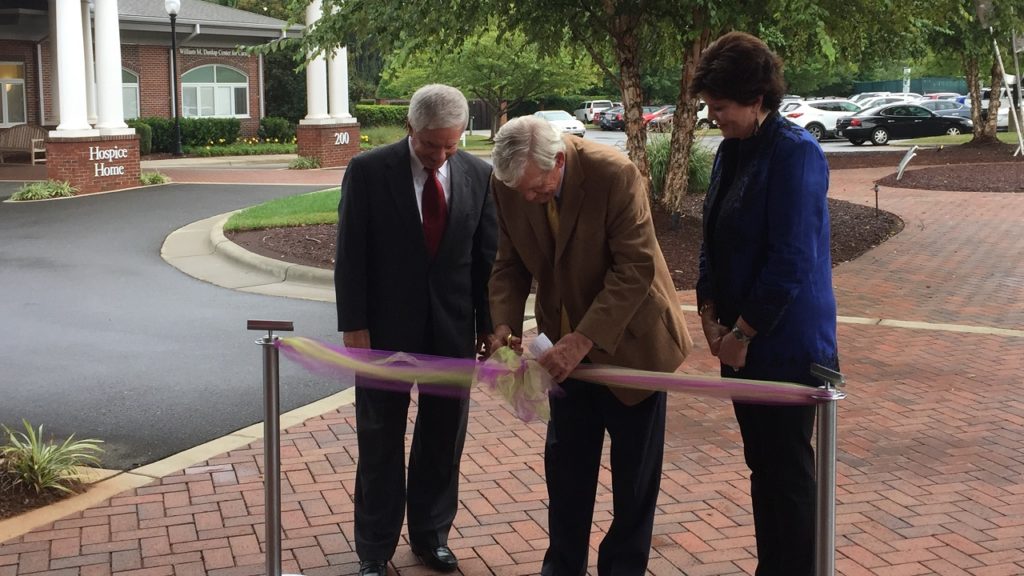
Carla Goldstein
By Sandy Cyr
A strategic plan is an important tool for any nonprofit organization. Equipped with a plan, organizations can chart their course. There is often a great deal of dialogue around the planning process itself, and rhetoric about keeping the plan a living document, but inevitably, the urgency of day to day operations leave strategic plans laying on shelves collecting dust. Rarely do you hear about what happens after the plan is adopted.
 When we spoke with Omega Institute in 2017, they were wrapping up their strategic planning process and getting ready to unveil their 5 year plan. Already almost two years into the plan, Omega keeps it front of mind. The two driving forces of the plan have become how they can enrich learning experiences for people who come to Omega, and how they can scale up engagement as a global force for change. But what is most unique about this particular plan is the section that outlines who Omega aspires to be, as a nonprofit organization that is dedicated to awakening the best in the human spirit.
When we spoke with Omega Institute in 2017, they were wrapping up their strategic planning process and getting ready to unveil their 5 year plan. Already almost two years into the plan, Omega keeps it front of mind. The two driving forces of the plan have become how they can enrich learning experiences for people who come to Omega, and how they can scale up engagement as a global force for change. But what is most unique about this particular plan is the section that outlines who Omega aspires to be, as a nonprofit organization that is dedicated to awakening the best in the human spirit.
 For over 40 years, Omega has offered holistic studies at both their 250-acre campus in New York’s Hudson Valley, as well as online. Over 1 million people have participated in Omega’s workshops, conferences and retreats that are designed to inspire personal and social change. Omega considers itself a lifelong learning institution for individuals as well as organizations, including their own. The strategic plan is organized around three concepts: teach, model, and act. Deeply connected to each of these concepts is the section titled, ‘Aspirations,’ that both points to what the organization is already doing and work that will be ongoing, beyond the scope of the five year plan.
For over 40 years, Omega has offered holistic studies at both their 250-acre campus in New York’s Hudson Valley, as well as online. Over 1 million people have participated in Omega’s workshops, conferences and retreats that are designed to inspire personal and social change. Omega considers itself a lifelong learning institution for individuals as well as organizations, including their own. The strategic plan is organized around three concepts: teach, model, and act. Deeply connected to each of these concepts is the section titled, ‘Aspirations,’ that both points to what the organization is already doing and work that will be ongoing, beyond the scope of the five year plan.
“We created this section to say, this is how we want to be,” says Omega President Carla Goldstein. “How we aspire to be ourselves as an organization; how we want our culture to be, how we want to act. It is a commitment to move towards those aspirations.” By including it as part of the strategic plan, anyone at the organization and anyone involved with the organization can understand what Omega seeks to be.
In crafting the plan, the team was very disciplined. They picked three goals, and six strategies to achieve those goals. This was based on their decades of experience as an organization. While the plan itself is aspirational, in order to reach those results Omega knew what they really needed to do was focus. “We needed to not try to do everything,” according to Goldstein.
 The work of Omega throughout the decades has led to the greater cultural adaptation of mindfulness, of yoga, and of thinking about the relationship of self-care and community care. With over 40 years of experience, people continuously seek opportunities to partner with Omega. “Before we issued the plan,” adds Goldstein, “opportunities would come our way and we didn’t have a solid way to evaluate them. Once you know what your intention is, you can chart your course. The value of planning has really been to help us focus and say, ‘no, we’re not going to do that.’” This doesn’t mean that Omega is closed down to other opportunities. What it means is that limiting goals and strategies has led to a lot of momentum and created a trajectory for the organization to be deliberate in partnerships that align with its goals and strategies.
The work of Omega throughout the decades has led to the greater cultural adaptation of mindfulness, of yoga, and of thinking about the relationship of self-care and community care. With over 40 years of experience, people continuously seek opportunities to partner with Omega. “Before we issued the plan,” adds Goldstein, “opportunities would come our way and we didn’t have a solid way to evaluate them. Once you know what your intention is, you can chart your course. The value of planning has really been to help us focus and say, ‘no, we’re not going to do that.’” This doesn’t mean that Omega is closed down to other opportunities. What it means is that limiting goals and strategies has led to a lot of momentum and created a trajectory for the organization to be deliberate in partnerships that align with its goals and strategies.
The strategic plan is very present in all that Omega does. At the organizational level, one of the biggest impacts of having the plan is that it gives them the opportunity to bring everybody together on aligned decision-making and resource allocation, both on their own time and financial resources of the organization. At the beginning of every year, Omega’s CEO invites staff to attend a very lengthy and transparent meeting where he goes through the plan, as it relates to upcoming programs and campus operations. Carla also attends departmental meetings to bring management and staff into the planning process throughout the course of the year.
The leadership team at Omega meets regularly to reflect on the goals, looking at challenges and opportunities from the previous, current, and future years. According to Goldstein, what Omega hopes to do is create a dialog within the organization that is connected to leadership decision making. The idea is to create opportunities for conversations that help to clarify what information needs to be considered, and how the collaborative feedback loop can support everybody in the organization as they work towards the shared goals of the plan.

Implementing a strategic plan can take years. While already almost two years into their five year plan, Omega is not quite yet at the point where the whole organization is completely integrated, because of the large number of programmatic activities of the organization. “It has taken significant time to bring everyone into the plan, and we are still working on that front,” explains Goldstein.
And come 2020, it will be time to begin reflecting on the next five year plan. What Carla Goldstein has learned most from Omega’s strategic plan is a combination of simplicity of what you’re going to do, combined with the depth that really connects to your mission and your dreams and aspirations. By understanding who and how they are as an organization, Omega is charting a clear course for their next 40 years.
Carla Goldstein, JD, is president of Omega Institute and cofounder of the Omega Women’s Leadership Center. An attorney with 25 years of experience in public interest advocacy, she has contributed to more than 100 city, state, and federal laws, and has worked extensively in city and state government on issues related to women’s rights, poverty, public health, and social justice. She is a commentator for WAMC’s show, 51%, writes a column and serves on the advisory board for Feminist.com, and serves as an advisor to Women Without Borders.





